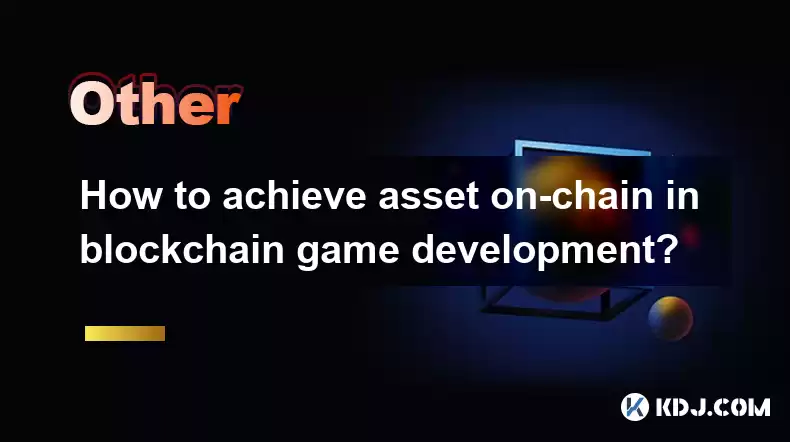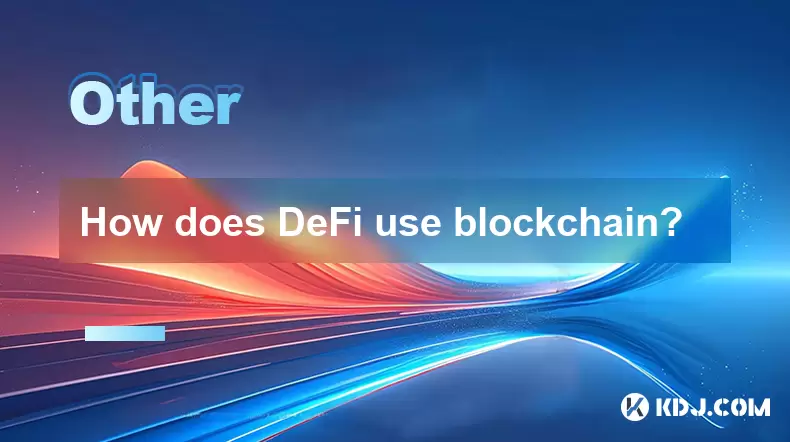-
 Bitcoin
Bitcoin $114000
0.76% -
 Ethereum
Ethereum $3488
0.53% -
 XRP
XRP $2.908
2.27% -
 Tether USDt
Tether USDt $1.000
0.05% -
 BNB
BNB $750.3
0.39% -
 Solana
Solana $161.9
0.14% -
 USDC
USDC $1.000
0.03% -
 TRON
TRON $0.3258
1.22% -
 Dogecoin
Dogecoin $0.1991
1.38% -
 Cardano
Cardano $0.7260
3.39% -
 Hyperliquid
Hyperliquid $38.20
2.33% -
 Stellar
Stellar $0.3987
7.33% -
 Sui
Sui $3.414
1.17% -
 Chainlink
Chainlink $16.28
2.52% -
 Bitcoin Cash
Bitcoin Cash $542.2
2.07% -
 Hedera
Hedera $0.2489
7.51% -
 Ethena USDe
Ethena USDe $1.001
0.05% -
 Avalanche
Avalanche $21.40
0.70% -
 Toncoin
Toncoin $3.635
0.75% -
 Litecoin
Litecoin $109.8
2.04% -
 UNUS SED LEO
UNUS SED LEO $8.955
-0.02% -
 Shiba Inu
Shiba Inu $0.00001221
2.44% -
 Uniswap
Uniswap $9.152
2.20% -
 Polkadot
Polkadot $3.588
2.09% -
 Monero
Monero $298.1
1.27% -
 Dai
Dai $1.000
0.01% -
 Bitget Token
Bitget Token $4.326
1.28% -
 Pepe
Pepe $0.00001045
1.96% -
 Cronos
Cronos $0.1330
4.27% -
 Aave
Aave $257.9
2.12%
How to achieve asset on-chain in blockchain game development?
On-chain assets in blockchain games enhance security and ownership, allowing players to trade items on marketplaces, but increase development costs and pose smart contract risks.
Apr 15, 2025 at 05:28 am

In the realm of blockchain game development, achieving asset on-chain status is crucial for ensuring the security, transparency, and interoperability of in-game assets. This process involves integrating digital assets into a blockchain network, where they can be tracked, traded, and managed securely. Here, we will explore the steps and considerations necessary to successfully implement on-chain assets in your blockchain game.
Understanding On-Chain Assets
On-chain assets refer to digital items or tokens that are stored and managed directly on a blockchain. Unlike traditional in-game items, which are controlled by a central server, on-chain assets are decentralized and owned by the players themselves. This approach not only enhances the security and ownership of the assets but also allows them to be traded on various marketplaces without the need for intermediaries.
Choosing the Right Blockchain
Selecting the appropriate blockchain for your game is a critical decision that impacts the functionality and user experience of your on-chain assets. Different blockchains offer varying levels of scalability, security, and transaction costs. Ethereum is a popular choice due to its robust smart contract capabilities, but it may suffer from high gas fees. Binance Smart Chain and Polygon are alternatives that offer lower transaction costs and faster processing times. Consider your game's specific needs and target audience when making this choice.
Designing Smart Contracts
Smart contracts are self-executing contracts with the terms of the agreement directly written into code. They are essential for managing on-chain assets, as they automate the rules and transactions related to these assets. When designing smart contracts for your game, it's important to consider:
- Asset Creation: Define how new assets are minted and added to the blockchain.
- Ownership and Transfer: Establish rules for asset ownership and the process of transferring assets between players.
- Interoperability: Ensure that your smart contracts can interact with other smart contracts and platforms to facilitate asset trading and integration.
Implementing Asset Tokenization
Tokenization is the process of converting in-game assets into tokens that can be stored and managed on the blockchain. This involves creating a unique token for each asset, which can be an ERC-721 token for non-fungible assets (like unique items) or an ERC-20 token for fungible assets (like currency). To implement asset tokenization:
- Identify the assets: Determine which in-game items will be tokenized and whether they will be fungible or non-fungible.
- Create token standards: Use existing token standards or develop custom standards to ensure compatibility with your chosen blockchain.
- Integrate with the game: Modify your game's code to recognize and interact with these tokens, allowing players to use and trade them within the game environment.
Ensuring Security and Compliance
Security is paramount when dealing with on-chain assets, as any vulnerability can lead to the loss of valuable items. Implement robust security measures such as:
- Smart Contract Audits: Regularly audit your smart contracts to identify and fix potential vulnerabilities.
- Encryption and Authentication: Use encryption to protect sensitive data and implement strong authentication mechanisms to prevent unauthorized access.
- Regulatory Compliance: Ensure that your game and its on-chain assets comply with relevant regulations, such as those related to digital assets and financial transactions.
Integrating with Marketplaces
To enhance the value and utility of your on-chain assets, consider integrating them with existing blockchain marketplaces. This allows players to buy, sell, and trade their assets outside of the game environment. To integrate with marketplaces:
- Select compatible platforms: Choose marketplaces that support your chosen blockchain and token standards.
- Develop APIs: Create APIs that allow your game to communicate with these marketplaces, enabling seamless asset transfers.
- Promote interoperability: Ensure that your assets can be easily listed and traded on these platforms, enhancing their liquidity and appeal to players.
Testing and Deployment
Before deploying your on-chain assets, thorough testing is essential to ensure that everything functions as intended. Conduct comprehensive testing that includes:
- Unit Testing: Test individual components of your smart contracts and game code to ensure they work correctly.
- Integration Testing: Verify that different parts of your system work together seamlessly, including interactions between your game and the blockchain.
- User Acceptance Testing: Allow a group of players to test the on-chain assets in a controlled environment, gathering feedback and making necessary adjustments.
Once testing is complete, deploy your on-chain assets to the mainnet, ensuring a smooth transition for your players.
Frequently Asked Questions
Q: Can on-chain assets be used across different blockchain games?
A: Yes, on-chain assets can be designed to be interoperable across different blockchain games, provided that the games use compatible blockchain networks and token standards. This allows players to use their assets in multiple gaming ecosystems, enhancing the overall value and utility of their holdings.
Q: How do on-chain assets affect game development costs?
A: Implementing on-chain assets can increase game development costs due to the need for smart contract development, blockchain integration, and security measures. However, these costs can be offset by the potential for increased player engagement and the creation of new revenue streams through asset trading and marketplaces.
Q: What are the risks associated with on-chain assets in games?
A: The main risks include smart contract vulnerabilities, which can lead to asset theft or loss, and regulatory uncertainties, which may affect the legality and operation of on-chain assets. Additionally, high transaction fees on some blockchains can impact the user experience and the feasibility of frequent in-game transactions.
Q: How can players benefit from on-chain assets in games?
A: Players benefit from on-chain assets through true ownership of their in-game items, the ability to trade these assets on open marketplaces, and the potential for asset appreciation over time. This can lead to a more engaging and rewarding gaming experience, as players have a real stake in the game's ecosystem.
Disclaimer:info@kdj.com
The information provided is not trading advice. kdj.com does not assume any responsibility for any investments made based on the information provided in this article. Cryptocurrencies are highly volatile and it is highly recommended that you invest with caution after thorough research!
If you believe that the content used on this website infringes your copyright, please contact us immediately (info@kdj.com) and we will delete it promptly.
- XRP: Crypto Analyst's Smartest Buy in 2025?
- 2025-08-04 00:30:13
- SEC, Crypto Regulation, and Digital Assets: A New Era?
- 2025-08-04 00:30:13
- Navigating the Meme Coin Mania: Cold Wallets, SHIB, and DOGE in 2025
- 2025-08-03 22:30:16
- Bitcoin's Price Fall and Scrutiny: What's a New Yorker to Think?
- 2025-08-03 22:30:16
- Shiba Inu's Resistance and Recovery Push: What's Next for SHIB?
- 2025-08-03 22:50:16
- Bitcoin, Hashcash, and Crypto Innovation: A Look at the Foundation and Future
- 2025-08-03 23:12:53
Related knowledge

What is the difference between on-chain and off-chain transactions?
Aug 02,2025 at 04:22pm
Understanding On-Chain TransactionsOn-chain transactions refer to digital asset transfers that are recorded directly on a blockchain ledger. These tra...

What is a node's role in a blockchain network?
Aug 03,2025 at 03:16pm
Understanding the Function of a Node in a Blockchain NetworkA node is a fundamental component of any blockchain network, acting as a participant that ...

How are transactions verified on a blockchain?
Aug 04,2025 at 12:35am
Understanding the Role of Nodes in Transaction VerificationIn a blockchain network, nodes are fundamental components responsible for maintaining the i...

What is the double-spending problem and how does blockchain prevent it?
Aug 02,2025 at 01:07pm
Understanding the Double-Spending ProblemThe double-spending problem is a fundamental challenge in digital currency systems where the same digital tok...

What is the difference between a blockchain and a database?
Aug 01,2025 at 09:36pm
Understanding the Core Structure of a BlockchainA blockchain is a decentralized digital ledger that records data in a series of immutable blocks linke...

How does DeFi use blockchain?
Aug 03,2025 at 11:15pm
Understanding the Role of Blockchain in DeFiDecentralized Finance (DeFi) relies fundamentally on blockchain technology to operate without intermediari...

What is the difference between on-chain and off-chain transactions?
Aug 02,2025 at 04:22pm
Understanding On-Chain TransactionsOn-chain transactions refer to digital asset transfers that are recorded directly on a blockchain ledger. These tra...

What is a node's role in a blockchain network?
Aug 03,2025 at 03:16pm
Understanding the Function of a Node in a Blockchain NetworkA node is a fundamental component of any blockchain network, acting as a participant that ...

How are transactions verified on a blockchain?
Aug 04,2025 at 12:35am
Understanding the Role of Nodes in Transaction VerificationIn a blockchain network, nodes are fundamental components responsible for maintaining the i...

What is the double-spending problem and how does blockchain prevent it?
Aug 02,2025 at 01:07pm
Understanding the Double-Spending ProblemThe double-spending problem is a fundamental challenge in digital currency systems where the same digital tok...

What is the difference between a blockchain and a database?
Aug 01,2025 at 09:36pm
Understanding the Core Structure of a BlockchainA blockchain is a decentralized digital ledger that records data in a series of immutable blocks linke...

How does DeFi use blockchain?
Aug 03,2025 at 11:15pm
Understanding the Role of Blockchain in DeFiDecentralized Finance (DeFi) relies fundamentally on blockchain technology to operate without intermediari...
See all articles

























































































